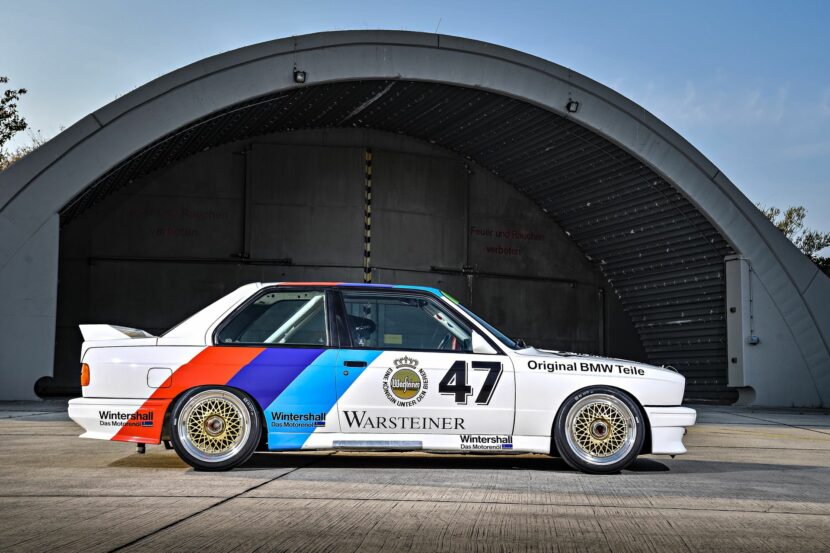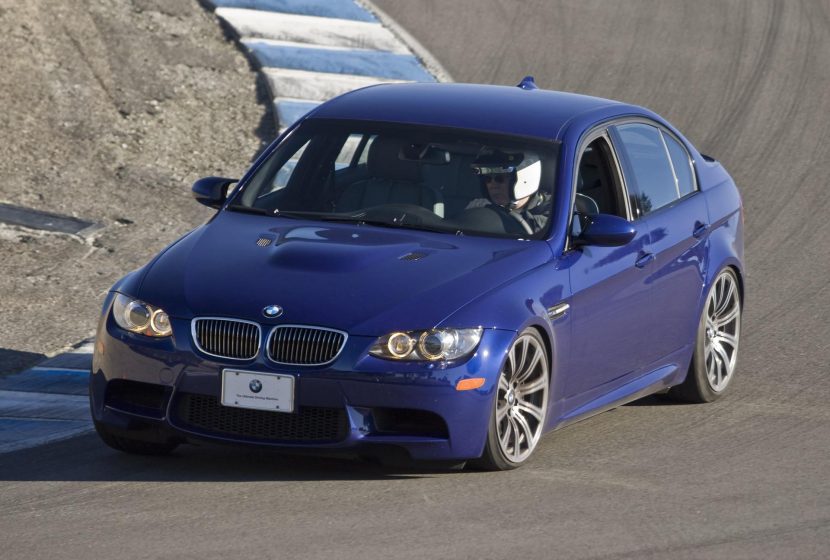The BMW M3’s relative accessibility, thrilling powertrains, and razor-sharp dynamics make it a hit with drivers. But there’s another component to the formula that helps make each generation of the M3 just as desirable as the one preceding it. The nameplate’s illustrious legacy spans four decades and is part of what makes the car so popular. And each generation of the M3, looking back, has something that contributed to the car becoming the red hot hit it is today. The question we’re posing today is: what will the G80’s legacy be?
Reviewing BMW M3 Generations and Their Legacy
BMW launched the first M3 in 1985, debuting largely as a homologation special. The marque needed to make 5,000 cars in order to qualify the model for DTM/Group A races, which occurred over the span of the car’s five-year production run from 1986 until 1991. Naturally, the E30 M3’s legacy has it easy: it’s the car that started it all. It also set the precedent for M3s preceding it: a high-revving engine, direct ties to Motorsport endeavors, and lots of unique bits that didn’t come on the regular 3 Series (including body panels).
The E36 M3 came next, and while its one of my personal favorites, a definitive “legacy” is not so easy to identify. But, there are a number of ways the E36 M3 has endured. And, in fact, it’s quite the cornerstone of the nameplate in some ways. It was the first M3 to utilize an inline-six, an engine that largely became inextricable from the M3 line despite the first-generation model sporting a four-pot. It also marked the first time BMW offered a four-door M3 model; which, later became the only way you could get an M3 badge on the back of your performance sedan!
The E46 M3 came next. Legacy perhaps is not the best word for the E46 M3, as the car stands on its own, definitively, as the M3’s “coming of age.” Incredible chassis balance stood out as the E46 M3’s selling point — and enduring, endearing trait decades later. It also united the US market with European market, as both sides of the pond saw the (mostly) same engine, rather than the two distinct flavors of E36 M3 that shipped to different parts of the world. The car’s revolutionary performance has only been matched by its truly timeless style. With over 85,000 examples sold worldwide, it also remains the nameplate’s most-sold model.
The Modern M3 Legacy
As we get closer to the present, things become both simpler and more complex when reviewing each generation of the BMW M3’s legacy. The E90, E92, and E93 M3 models touted a motorsport-derived V8 under the hood, the first and last to do so. More important, perhaps, they were also the final M3s to enjoy hydraulic power-assisted steering—a beloved trait for purists seeking analog feel.
Then came the F80 generation, marking a pivotal shift for the M3 nameplate. It introduced turbocharging for the first time in an M3, with the twin-turbo S55 inline-six replacing the high-revving V8. It was also the generation where BMW split the M3 and M4 into two distinct models—sedan and coupe, respectively. The F80 M3 is often remembered for its brutal power delivery, stiff chassis, and aggressive tuning, which polarized enthusiasts. But it also brought massive tuning potential and cemented the turbo inline-six formula that continues today.
Then, we arrive at the G80 M3.
The G80 M3’s S58 engine isn’t the first turbo inline-six in an M3, although it is rather delightful. It isn’t even the first to use a traditional, torque-converter automatic transmission — the E36 M3 did, and that’s hardly an accolade anyway. But there is one area where the G80 M3 succeeds at setting a bar: all-wheel drive. It’s the first M3 to offer xDrive all-wheel drive, and thus, the fastest from zero to 60 mph. It’s likely we’ll continue to see xDrive as a staple as the M3 lineage progresses. And, disappointingly, perhaps the most positive thing the G80 will be remembered for.
The Stakes Have Never Been Higher
The interesting thing about the G8X cars is that so much is to-be determined when it comes to the car’s legacy. And scope varies wildly. It could well be that its only contribution the overarching M3 legacy is all-wheel drive. In another scenario, it’s the last non-electrified/hybrid M3 ever. Still another (though much less likely) possibility is that it’s the final M3 offered with a manual transmission. Sharing a common thread with some of its predecessors, there’s an angle for it to be the “last real M3.” Particularly if the next M3 is either electrified or automatic-only.
In conclusion, we’ll likely have to wait a few years to determine the G80 M3’s definitive legacy. Although, there is at least one other important milestone. It’s the first time BMW has offered a factory Touring model, albeit not in the US. And of course, there are some more polarizing things that will likely carry into future M3 models. Namely, a high curb weight and overall design ethos. Particularly, those grilles. Hopefully, the G8X will be remembered for more than its grilles and all-wheel drive, but time will tell. What do you think the G80 M3’s legacy will be?





